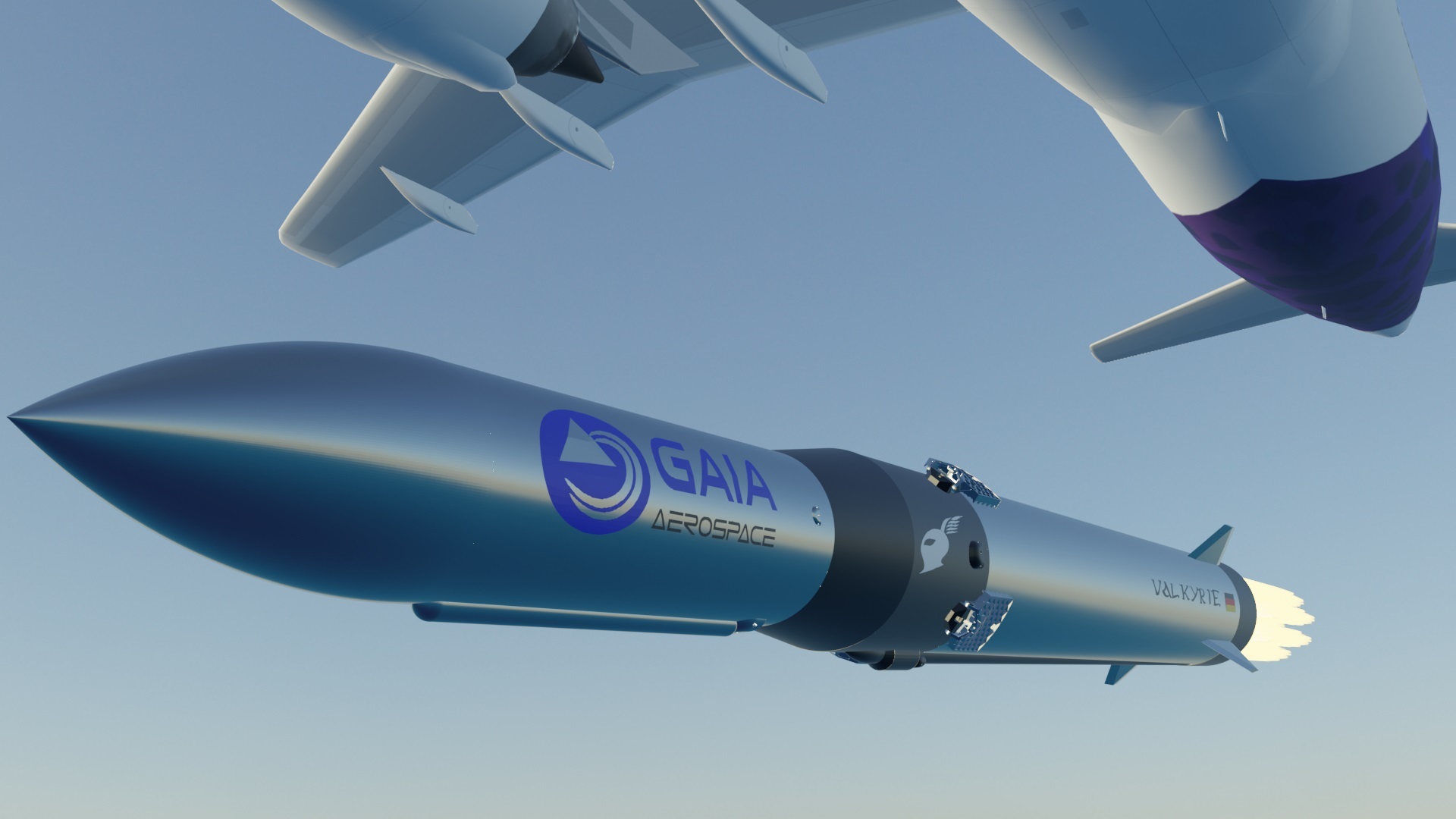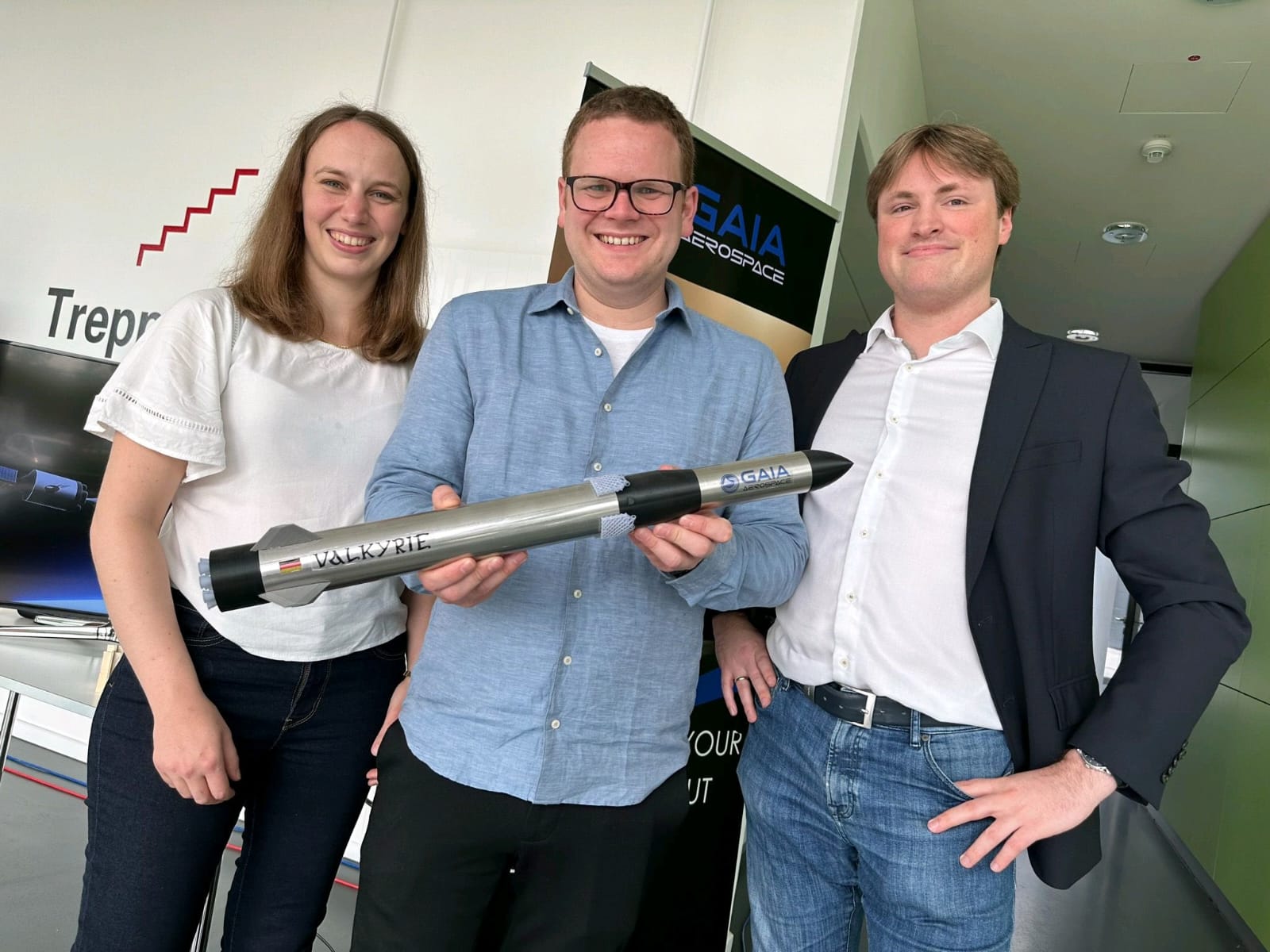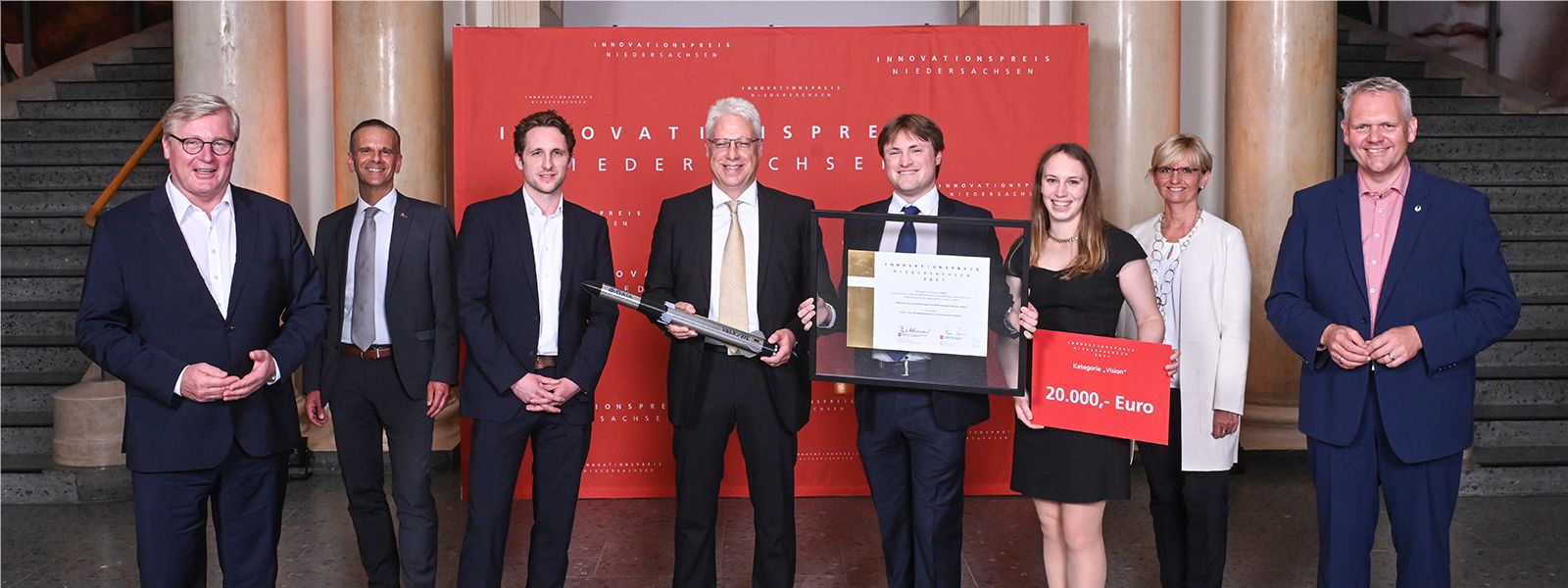
AirLaunch system Valkyrie in new design
This Space News was published on Mon, 10.05.2021 – 14:51 CEST, covering GAIA AerospaceGAIA Aerospace is fundamentally changing the design of its Valkyrie AirLaunch System. Instead of relying on lightweight materials such as carbon or aluminum, stainless steel will now be used. This change also affects the rocket's grid fins, which were originally to be made of titanium. The switch to stainless steel has several advantages, as GAIA CEO Kai Höfner explains: "Grid fins made of stainless steel are 80 to 90 percent cheaper than the titanium version. Instead of a single fin made of titanium, all four fins can be made of stainless steel for the same money, and there is even some left over for the construction of the actuator."
Compromise without sacrifice
Although stainless steel is not considered a lightweight material due to its high density, it is nevertheless interesting for the production of rockets - apart from the price advantage. The material is easier to process and its extremely high strength makes it possible to design components that are less massive while retaining the same load-bearing capacity. For example, the walls of the tanks and outer hull can be thinner, which compensates for part of the extra weight compared with the carbon or aluminum solution. In addition, stainless steel has excellent thermal properties and can be used at both high and low temperatures. At best, this means that additional heat shields can be dispensed with to protect the first stage from destruction on re-entry into the atmosphere. On the other hand, the tanks must also be able to withstand temperatures of less than -200 °C, because the liquid oxygen (LOX) used as propellant has a boiling point of -182.97 °C. These two extremes place high demands on the material used, whose reliability in terms of planned reuse is essential. While composite materials such as carbon can become brittle and unnoticeably fragile, stainless steel deforms under excessive loads. This makes it easier to detect and maintain structural weaknesses.
More weight, lower costs
Dispensing with lightweight materials undeniably results in a rocket having a higher mass. If the thrust of the engines remains unchanged, this ultimately also reduces the payload capacity, which is, however, crucial for the economic viability of a rocket. "Due to the lower material costs for stainless steel, the launch costs per kilogram of payload can nevertheless easily be halved, if not reduced even further," says Höfner. GAIA is not giving any details about the exact launch price at this stage. But according to Kai Höfner, Valkyrie "will really shake up the previous conditions in space travel." This is especially true for manufacturers of CubeSats who do not need high payload capacities. For them, Valkyrie offers the prospect of an exclusive launch opportunity in combination with a favorable launch price and the flexibility of an AirLaunch system.
Stainless steel has a permanent place in NewSpace
GAIA is by no means alone in its decision to use stainless steel. Both SpaceX and Rocket Factory Augsburg (RFA) switched to stainless steel for the same reasons in their development of Starship, Super Heavy and RFA One. At the same time, announced launch prices of less than 2,000 euros per kilogram in some cases to low Earth orbit are a clear challenge to other international competitors. While the Starship has already completed its first test flights and landings, the Augsburg launch vehicle is scheduled to take off for the first time at the end of 2022. A launch date for the Valkyrie, however, has not yet been set.
via GAIA Aerospace




